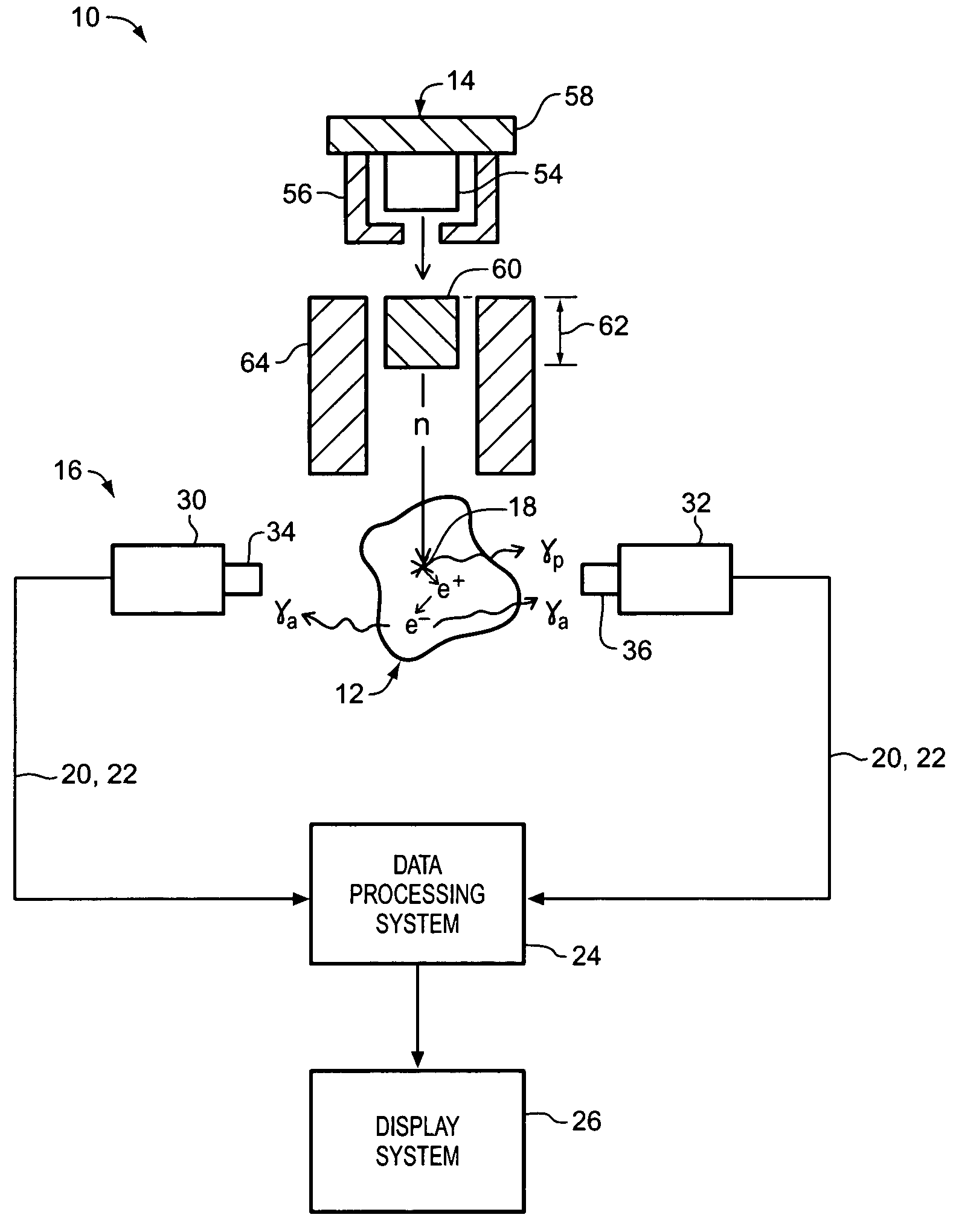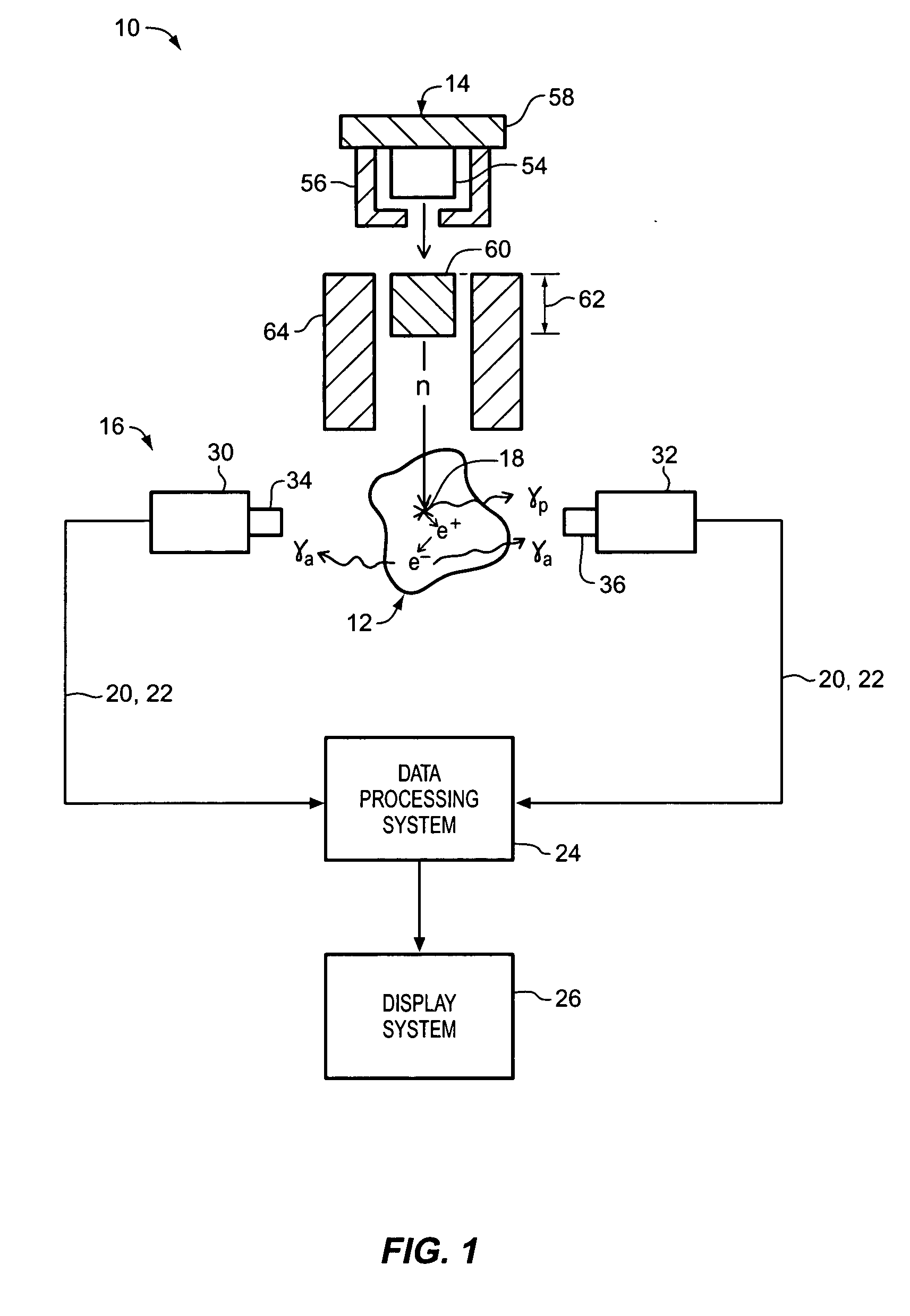Method for on-line evaluation of materials using prompt gamma ray analysis
a gamma ray analysis and material technology, applied in liquid/fluent solid measurement, instruments, machines/engines, etc., can solve the problems of limited utility of external positron annihilation techniques, inability to penetrate very deeply into materials, and limited techniques for evaluating the surface structure of materials
- Summary
- Abstract
- Description
- Claims
- Application Information
AI Technical Summary
Problems solved by technology
Method used
Image
Examples
Embodiment Construction
[0024] One embodiment of apparatus 10 for evaluating a material specimen 12 is illustrated in FIG. 1 and may comprise a neutron source or generator 14 and a detector assembly 16. The neutron source or generator 14 produces neutrons n and directs the neutrons n toward the material specimen 12. The neutrons n interact with the material specimen 12, resulting in the production of prompt gamma rays γp. While some of the prompt gamma rays γp are emitted from the material specimen 12, others of the prompt gamma rays γp will result in the formation of positrons e+ within the material specimen 12 through a process known as “pair production,” (illustrated schematically in FIG. 1 at 18) More specifically, and as will be described in greater detail herein, prompt gamma rays γp having energies greater than about 1.1 MeV are very likely to produce positrons e+ within the material specimen 12. Many of the positrons e+ produced as a result of the pair production process ultimately annihilate with ...
PUM
| Property | Measurement | Unit |
|---|---|---|
| energy | aaaaa | aaaaa |
| atomic number | aaaaa | aaaaa |
| atomic number | aaaaa | aaaaa |
Abstract
Description
Claims
Application Information
 Login to View More
Login to View More - R&D
- Intellectual Property
- Life Sciences
- Materials
- Tech Scout
- Unparalleled Data Quality
- Higher Quality Content
- 60% Fewer Hallucinations
Browse by: Latest US Patents, China's latest patents, Technical Efficacy Thesaurus, Application Domain, Technology Topic, Popular Technical Reports.
© 2025 PatSnap. All rights reserved.Legal|Privacy policy|Modern Slavery Act Transparency Statement|Sitemap|About US| Contact US: help@patsnap.com



